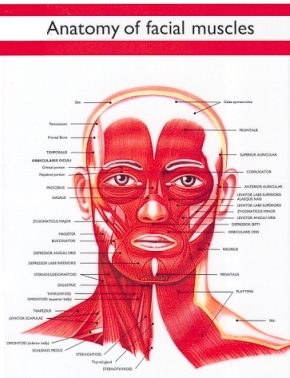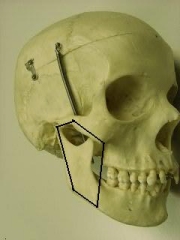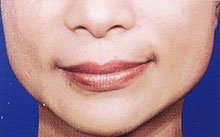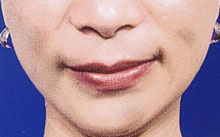About Botox
Botulinum toxin is secreted by the bacterium Clostridium Botulinum, which was first identified following an outbreak of food poisoning in the 1700s. The type of botulinum toxin we currently use for cosmetic and other purposes is type A. There are now quite a few commercially available botulinum toxin type A, BOTOX from the US, DYSPORT from the UK, Siax from Korea, and Xeomin from Germany.
How Does Botox Work?
Botox binds to the nerve endings and blocks the transmission of a very important chemical called Acetylcholine, preventing it from reaching the receptors in the muscles or sweat glands. Acetylcholine is the messenger for muscle contraction and sweat secretion.
This blockage results in 2 important effects:
- Muscle relaxation and shrinkage
- Reduction of sweating
The first use of Botox was to relieve muscle spasms. Now these effects are used to improve the cosmetic look of some exaggerated expression lines as well as to help excessive sweating.
There is another effect, which is very useful, although this is not quite understood how it is achieved. When it is injected into a few points in the dermis. There is a pulling effect away from each other and results in a tightening of that area.
Botox also reduces the sebaceous gland activities in the hair follicles, and research has shown that injecting superficially in the T - zone area results in reduced pore sizes.
What Are The Current Cosmetic Uses?
Reduction of Expression Lines
- Glabellar Frown Lines (Vertical lines between the eyebrows)
- Crow’s feet (The smiling lines at the eye corners)
- Horizontal forehead frown lines (The lines when raising the eyebrows)
Brow lifts
- Raise and alter the shapes of eyebrows
Reduction of the Muscles Bulk
- Chewing muscles (Square / broad facial contour to become more oval / slimmer)
- Calves muscles (Slimmer lower legs contour)
Skin Tightening
- Uplift under-eye areas (Reduce eye bags and dark eye circles)
- Uplift facial contour (Firmer and tighter)
Reduction of Sebaceous Gland Activity
- Reduce pore sizes
Reduction of Excessive Sweating
- Underarms
- Palms
Botox is a simple non-surgical process that can be completed in 10 minutes. Injections are made using the tiniest needles, and no anesthesia is required, although some doctors may choose to numb the area with a cold pack or anesthetic cream prior to injecting. Discomfort is usually minimal and brief. There is no recovery time and no one will notice anything done on you. You can even do it in your lunch break.
What Are The Possible Side Effects?
Very occasionally there may be a bruise at the point of injection, which will last for only a few days. Applying cold pack and vitamin K cream will shorten it.
If too much is injected near the eyes, which is unusual, it may cause too much weakness of the upper eyelids and you will find it hard to keep the eyes open. This is temporary and will disappear when the effect of the toxin subsides.
If this is the first time of injection, you may need a couple of weeks to get used to the new ranges of muscle movements.
No one knows about the effect on pregnancy, and it is best not to have this treatment during pregnancy.
People who have diseases that weaken the nerves and muscles should avoid Botox because the weakness may get worse.
Expression Lines
|
|
Botox / Dysport is injected directly into the muscles responsible for the lines. The doctor will determine where to inject by asking you to move the muscles in different expressions.
Within days there can be a noticeable improvement in the moderate to severe expression lines, and the effect usual lasts for 4 - 6 months. This will not radically change your facial appearance and you can still frown or look surprised, only without the wrinkles and creases.
Glabellar Frown Lines
These lines are the result of contraction of the muscle called Procerus between the eyes. Normally about 5 injections are needed.
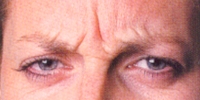 |
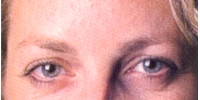 |
|
Before Injection : |
After Injection : |
Crow’s Lines
These lines extend from the sides of the eyes and are due to the contraction of a circular muscle around the eyes called Orbicularis Oculi, as well as skin aging associated with sun exposure. Options for treating these lines include surgery, laser resurfacing, and injections of Botox / Dysport. The toxin is usually injected in 4 to 5 sites on each side.
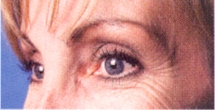 |
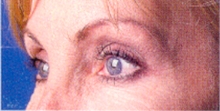 |
|
Before Injection : |
After Injection : |
Horizontal Forehead Frown Lines
These lines are due to the upward contraction of the muscle Frontalis. Botox / Dysport is injected at multiple sites along the lines, usually in 2 rows..
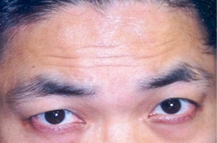 |
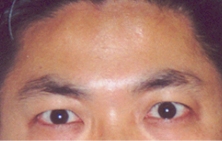 |
|
Before Injection : |
After Injection : |
Brows Lifts
There are various muscles pulling the eyebrows either to go up or to go down. By injecting Botox / Dysport into different muscles and changing the force balance of these contractions, we can correct asymmetrical eyebrows, change how the eyebrows look, for example a flared brow, an arched brow or a flatter more horizontal brow.
Experience is very important here and caution is needed not to use too much dosage, because of the possible side effects of too much weakness in the upper eyelids.
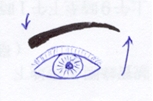 |
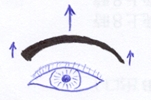 |
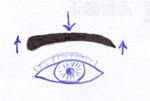 |
|
Flared Brow : |
Arched Brow : Mature Lady Look |
Flatter Brow : |
Square & Angular Face
The use of Botox / Dysport in treating square faces in western people has been used since 1994, but it did not create a lot of interest until recently. This may be because the facial contours in Caucasians tend to be taller, and compared to Asian, they have smaller but longer, narrower faces. So a square face in them tends to be less noticeable and is not generally considered unattractive, leading to the infrequent request for this kind of treatment.
Asian, particularly the Korean, tend to have shorter and wider faces and so the square jaw is more exaggerated and cosmetically more unacceptable. A lot of the initial clinical experience in this came from the Korean.
Causes of a Square Face
It can be due to:
> Large size of the mandible bone, which is acquired since birth
> Hypertrophy (unusual enlargement) of the chewing muscles called Masseters.
|
|
Masseter hypertrophy can develop from habitual chewing movements or teeth grinding, often unconscious, or frequent chewing of tough foods such as dried squid, or chewing gum.
In the past, treatment for square face has involved surgical reduction of the mandible and partial resection of the masseter muscles. This is very traumatic and carries a big risk of injuries to the salivary glands and the facial nerve, which is not uncommon. Patients have to suffer from prolonged swelling and discomfort after the operation.
If masseter hypertrophy is the cause of the square face, then Botox / Dysport can be considered without any of these risks and so is pretty safe when used correctly.
|
|
|
What You Expect
The muscles start getting smaller after about 2 weeks if you respond quickly, but in some cases the results are not visibly obvious until the second month. Peak effect is seen at 2 - 3 months when the muscle bulk will lose on the average 20 - 25%. It may not sound very much but this % is enough to give you a huge change in facial contour!
In majority of cases, your improvement will last for 6 - 9 months after only a single treatment, and may require a second one after that.
Logically speaking, if you do not allow yourself to chew tough foods or chewing gum again, then it should not recur.
Regarding the side effects, if they do happen, they are temporary. These include mild weakness and pain on chewing, or a change in smiling expression.
Lower Legs Contour
As in the case of square faces, this is due to hypertrophy of the muscles, in this case the Gastrocnemius and Soleus. This hypertrophy in the lower legs is more common in the Asian, and can be cosmetically so unacceptable that make ladies unwilling to wear skirts.
In the past, plastic surgeons can treat this by:
- Cut some of the nerve supply to the muscles there and make them shrink. This is relatively simple but there is high chance of recurrence. Satisfaction is not too great either.
- Cut away part of the muscles. This is a more permanent correction with high satisfaction, but the scar from the operation is a cosmetic problem in itself.
Because of the effect of Botox / Dysport on the muscles, causing partial weakness and some shrinkage, it can be used to alter the shape of the lower legs. This use of Botox / Dysport is popular in Korea and Taiwan.
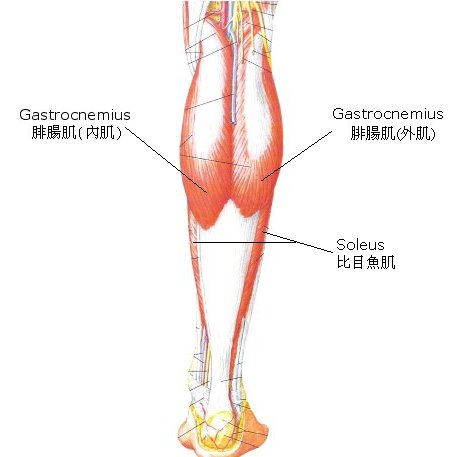 |
The first course of treatment usually requires 2 sessions separated by 2 - 3 months. The achieved effect lasts for about 6 - 9 months and requires a repeat injection. Overall the improvement is moderate.
Side effects include temporary pain, which normally does not interfere with walking. However, there is a small chance that the walking balance may be affected and it is better not to wear high heals for a while.
Although the dosage used is a lot more than that used in treating expression lines or square faces, so far there is no reported problems in general. This higher dosage means that the cost for having this treatment is quite expensive and it is up to the individual to see if this is worth the money or not.
| F R O N T |
 |
|||
| B A C K |
 |
|||
| BEFORE | 3 Months | 6 Months | 12 Months | |
Eye Bags & Facial Skin Tightening
This is sometimes referred to as the Intradermal Botox / Dysport Lift. The Botox / Dysport is injected into the dermis of the skin, not into the muscles as in the conventional way of injection.
Botox / Dysport is injected into multiple points around the under-eye areas, or along the facial margin all around. The effect of the toxin injected in this manner contracts an area of the skin between injection points, therefore causing the tightening.
The lifting effect on the face is also attributed to injections near the jaw line, where Botox / Dysport diffuses into the underlying platysmus muscles, weakens the downward pull of it on the face, and therefore gives the cheeks and jowls a lift, with tighter and firmer appearance.
Botox / Dysport is usually more diluted than in the conventional muscular injections. Very often it is mixed with a diluted hyaluronic acid, which will help to enhance a firm and youthful appearance.
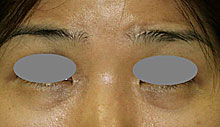 |
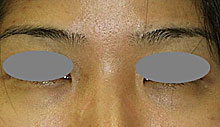 |
Reduce Skin Pores
The pores are opened because of some fine muscles pulling on the follicles. By weakening this muscle pull, the pore sizes can be reduced and give the skin a much smoother look.
Similar to treating eye bags and skin tightening, the toxin is injected intra-dermally in the T-zone where the pores are the largest.
 |
 |
Excessive Sweating
Excessive sweating beyond normal is called Hyperhidrosis. There are two types of sweating: the apocrine and the eccrine glands, and it is the latter involved in hyperhidrosis. It occurs most commonly on the palms, axillae, face, and soles of the feet. Up to 0.5% of the population is affected.
It can be distressing for many patients and even disabling for some. In the underarms it is associated with an offensive odour. In the palms it causes embarrassment during handshakes, and can interfere with normal activities like opening the door or grabbing papers.
The cause of hyperhidrosis is unknown, but is probably due to a malfunction of part of the brain called hypothalamus, which is responsible for sweating regulation.
Other treatment options include topical anti-perspirant containing aluminum chloride salts, oral anti-cholinergic drugs, tap water iontophoresis, and surgery.
There are more details on this topic under Medical Skin Problems > Common Skin Problems > Hyperhidrosis.
As mentioned above, Botox / Dysport interrupts the transmission of Acetylcholine from the nerve endings onto the sweat glands. Botox / Dysport has been used since the mid 1990s, and is most frequently used for the palm and axillae.
Botox / Dysport is injected into the skin at multiple sites. The effect is rather obvious after only 2 days and comes to a peak after 5 days on average. The sweating is reduced by an average of 83% after 1 week. The duration of this effect will last between 6 to 12 months and patients reported an improvement in quality of life. However, the effect may very with individual. Doctors will adjust the doses and injection sites to obtain the optimal result.
Some patients find the injections painful and some experience small bruising. For injections into the palms, weakness of the hand muscles is possible but is uncommon.
The administration is a straight forward procedure:
Prior to the treatment, you should shave the underarms, abstain from use of over-the-counter deodorants or antiperspirants for 24 hours, and should be resting comfortably without exercise, hot drinks, etc for approximately 30 minutes.
| Affected axilla is dried and then painted with iodine solution. | 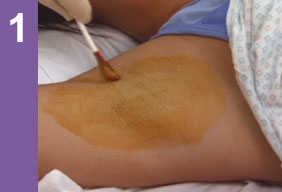 |
| The area is brushed with starch powder. 10 minutes later a blue-black mark will identify the affected area. This is the Iodine Starch Test. | 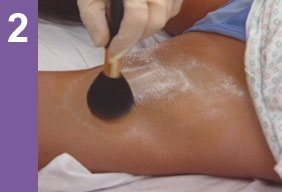 |
| The affected area is circled with a surgical marker and cleaned with alcohol. | 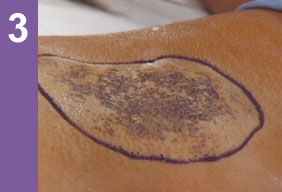 |
| Injection points 1.5 to 2 cm apart are marked using a surgical pen. | 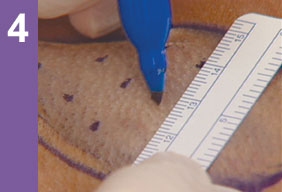 |
| Recommended dosage of Botox or Dysport is allocated per injection. | 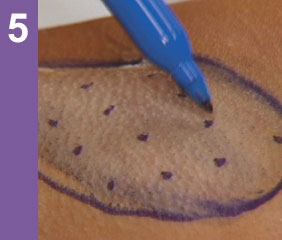 |
| Injections are made to a depth of approximately 2 mm. After injection, the treated area is cleaned with alcohol. | 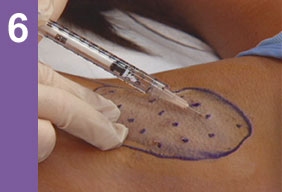 |


